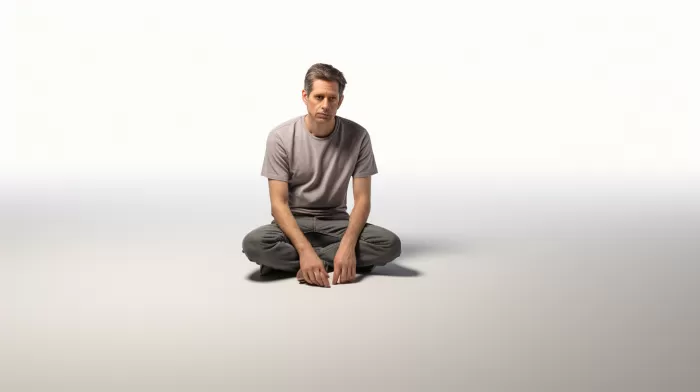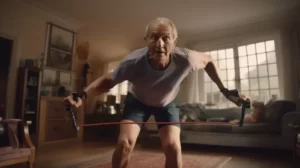Want to know how long you’re going to live? Try sitting down on the floor and then getting back up without using your hands. If you can do it, congratulations- not only are you in good shape, but researchers in Brazil believe you might outlive someone who needs assistance getting up. Now, while this may not be a foolproof method for determining your exact life expectancy, the ease or difficulty you experience while performing this task can provide valuable insights into your future health.
According to a study led by Claudio Gil Araújo at the Clinimex – Exercise Medicine Clinic in Rio de Janeiro, the way an individual can transition from sitting to standing without any support speaks volumes about their overall musculo-skeletal fitness. This simple test can help determine if a person is at risk of developing complications related to reduced mobility or flexibility down the line.
Araújo and his team devised a scoring system known as the ‘sitting-rising test,’ which awards various points depending on the number of support points – hands, knees, etc. – a person needs to maintain balance while rising from a seated position on the floor. A lower score indicates a higher reliance on support points, which can be indicative of weaker muscles or a decreased range of motion.
To perform the test, begin by sitting down on the floor using your legs crossed comfortably. From here, try to push yourself up into a standing position without relying on either of your hands or your knees. You may find that you’re able to manage this quite easily, or you may struggle and need a bit of extra support. In any case, the goal is simply to determine how much effort it takes to accomplish this movement.
Researchers discovered that those who scored three or more points had a higher likelihood of dying within a six-year period than those who scored fewer points. This finding held true even when other health factors, such as age or body mass index (BMI), were considered. So, while it’s important to remember that this test can’t predict your exact life expectancy, it does provide an interesting window into how your current fitness levels may have a long-term impact on your overall health and longevity.
This test isn’t just for middle-aged or older individuals, either. People of all ages can benefit from assessing their musculo-skeletal fitness. This knowledge can serve as motivation to address any weaknesses by incorporating strength training, flexibility exercises, or other forms of physical activity into your daily routine.
Luckily, there are plenty of options available to help improve your sitting-rising test score, regardless of your current fitness level. Incorporating exercises such as yoga, Pilates, or basic stretching routines can go a long way in increasing flexibility, while strength training and resistance exercises can help build muscle to support your movements.
It’s also important to consider the reasons why someone might struggle with this test, as this knowledge can help inform your approach to improving your score. For example, individuals with poor core strength might have a difficult time getting up from a seated position without any support. By focusing on strengthening the abdominals and back muscles through targeted exercises and workouts, these individuals can work towards feeling more confident and capable in performing this simple movement. Alternatively, those with hip or knee injuries might want to work on rehabilitating these areas before diving into other types of exercises.
In addition to tracking your progress through the sitting-rising test, it’s essential to listen to your body throughout your fitness journey. If you’re experiencing ongoing pain, difficulty with movement, or other concerns, it’s crucial to work with a qualified healthcare provider or fitness professional to ensure you’re addressing your unique needs safely and effectively.
Overall, the sitting-rising test offers a simple yet powerful tool for assessing your current musculo-skeletal fitness and predicting its potential impact on your longevity. By using this test as a starting point for making improvements, you can work towards not only increasing your overall health but also boosting your chances of enjoying a long, fulfilling life. So go ahead, give it a try – you might just learn something insightful about yourself and your future.


![8 Simple Tips for a Longer, Happier Life [See Them Now]](https://naturalhealthreserve.com/wp-content/uploads/2024/01/8-healthy-tips-live-longer-slideshow-300x168.webp)
